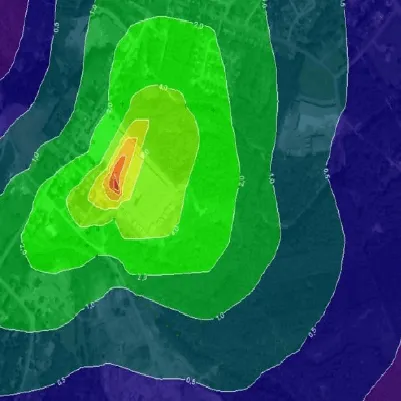Predicting the spread and development of a pollutant is vital to environmental protection. In emergencies, such as accidental discharges in a stream, the anticipation of the pollutant evolution is crucial to effective and rapid decision-making to protect the affected area. Accidental or intentional contaminant spillages are a constant concern to anyone using water from streams, rivers or coastal bathing waters.
Hydroquo+ is working on dispersion models for Barcelona and Berlin as part of the iBathwater project’s new integrated management system for urban sewerage networks (see article). This aims to reduce discharges of untreated water on the environment during intense rainfall by improving sewage treatment plants’ capacity to treat wastewater during low flows (see article).




Water pollution-dispersal models assess the impact of pollutant discharges on rivers, coast and groundwater. They predict how pollutants will move and spread in water bodies, including where they might accumulate or be toxic. The models are used to plan treatment systems for discharges from industrial plants, municipal wastewater treatment plants and mines. They also help to manage accidental contaminant spills into surface water bodies.


The use of dispersion models is essential in environmental protection. These models predict the spread and development of a pollutant, which is vital to protect areas that are affected by accidental discharges or intentional contaminant spills.
Accidental or intentional contaminant spillages are a constant concern to anyone using water from streams, rivers or coastal bathing waters. In emergencies, such as accidental discharges in a stream, the anticipation of the pollutant evolution is crucial to effective and rapid decision-making to protect the affected area.
